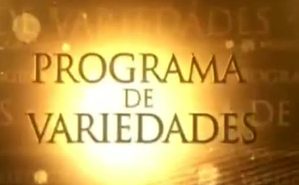Variety programs characterize for a varied thematic/ formal variety thus the alternate use of text and music is the essential feature of this programs. For this reason, there are risks that several programs belonging to the varied programming department in a same radio station resemble each other. This situation must be avoided, programming must strive for each program to be unique while maintaining its relation with the rest of the programs of the radio station. This uniqueness can be established through its function, theme, target audience, purpose, among other things. In other words, no program should be equal or similar to another.
Therefore, it is necessary to define clearly all the sections and portions on the tab and during the process of creation and production; what is written in this document should be strictly followed as a crucial condition to succeed.
For example, two variety programs can have equal function, but their production may differ based on their target audience. In case the target audiences is similar, but the functions aren’t, they may look for a well-defined difference that may include addressing certain groups within that audience.
Let´s illustrate the above said with two youth-oriented programs. One of them may have an informative function and the other one a guidance function; or one could be addressed to young students, tackling issues such as the work of the student organizations while the other could be addressed to young workers. In this case, these programs will deal with the needs of young workers, their need of professional development and other issues regarding the youth workforce.
Now, let’s take a variety program aimed at women and family and another one targeted at a younger audience. In the first case, the hosting will be in the manner of a conversation with the audience while in the second the hosting will be more lively. Meanwhile, the music selection in the first program will reach as far as the 1990s while in the second program, the selection will be more closer in time, comprising the music released since the beginning of the 21st century until the present day.
There are also variety shows at a general audience with similar function. In this case, the difference must lie in their purposes and profiles. Let’s assume they both have cultural function. The purpose of one of these programs is to “Expand the knowledge of universal culture of the audience,” and comprises several aspects of universal culture and literature, in which they include the work of the artists that fall under this category; its music should be rigorously selected. The second program’s purpose could be “Contributing to the knowledge of multiple aspects of social interest.” The profile of this program will contain topics related to history, geography, environment, science and technology, including a question to the public. In this case, the music, which should be of quality, will include pieces that are well-known and closer to the people’s tastes.
Mentioning all the possible and countless examples would make this article extremely long and yet we would not look into the full range of situations that in the practice could spark creativity. We just wanted to illustrate the situation with some of the examples given so far and bring the attention on the importance of designing variety programs so they have a well-defined identity that set them apart from the rest.
The function, topics, target audience, musical selection, and hosting, among other elements, are the ones that make possible to design and differentiate the variety programs within the same radio station.
Translated by: Daysi Olano
Revised by ESTI



